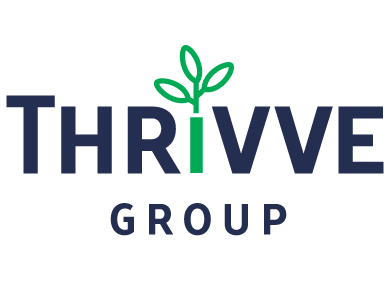Navigating Generative AI Adoption Strategies
Generative AI is undergoing a transformative wave, and in 2024, it is poised to become a staple for businesses, offering a competitive edge to those who swiftly adopt this technology. The question arises: how can you seamlessly integrate this technology into your operations without lagging behind? Before delving into adoption strategies, it's essential to understand what Generative AI entails and how it can elevate business performance.
Understanding Generative AI
Generative AI employs sophisticated algorithms to craft diverse content, including text, images, video, and audio, by drawing insights from training data through a text prompt. These algorithms are constructed on foundation models trained extensively on raw data to recognize patterns and execute various tasks. Notably, these algorithms demand substantial computing power, and creating custom models might incur considerable expenses. However, we will explore different approaches to implementing Generative AI later in this discourse.
Generative AI has widespread applications across industries, offering benefits such as task automation, content creation, and personalized customer experiences through chatbots. The potential impact of Generative AI on any sector is substantial.
Navigating Risks in Generative AI
However, alongside its promise, Generative AI introduces risks that must be acknowledged. According to Baxter & Schlesinger (2023), "Seventy-nine-percent of senior IT leaders reported concerns that these technologies bring the potential for security risks, and another 73% are concerned about biased outcomes." Hector (2024) states that these security risks can be the following:
Prompt Injection: Manipulates large language models (LLMs) by creating malicious inputs to override the system prompt, causing unintended actions and generating harmful content.
Data Poisoning: Tampering with data to train AI models introduces biases or modifies the model's behavior, compromising reliability.
Model Evasion: Attackers modify inputs, causing AI models to misclassify or misinterpret them, potentially leading to significant consequences, such as loan approval decisions.
Model Extraction: This involves stealing an AI model's intellectual property and behavior to create a new version that behaves like the original.
Inversion Attacks: This allows attackers to discover a model's training data and reconstruct the data it has been trained on, posing risks of data leaks and privacy violations.
Supply Chain Attacks: Exploit vulnerabilities in integrated systems, such as SaaS and other applications, and may go undetected. Implementing DevSecOps (security testing during the software development life cycle) best practices before integrating AI tools is crucial.
While some of these attacks may be technologically constrained, security teams must proactively develop strategies to secure AI models and mitigate these risks.
Other risks include inaccurate results from third-party data, hallucinations arising from outdated or incomplete data, and biased outcomes due to biased data training.
Strategies for Generative AI Integration
Moving forward, let's explore how to implement Generative AI effectively. Experts suggest various approaches, from creating custom AI models, which may be resource-intensive, to the recommended strategy of fine-tuning. Fine-tuning involves adjusting the base model's parameters to tailor to specific tasks, offering a more cost-effective solution.
Practical Integration Strategies:
Identify Business Use Cases: Pinpoint scenarios where Generative AI can offer tangible benefits, clearly defining expected outcomes.
Build a Cross-Functional Team: Assemble a team comprising AI specialists, data scientists, and domain experts to drive integration aligned with business goals.
Ensure Clean and Normalized Data: Gather high-quality, clean, and normalized data for effective AI model training.
Fine-Tune the Model: Optimize the model's performance through fine-tuning, a crucial step in tailoring it to specific business needs.
Integrate into Business Processes: Implement the model into business processes, including deploying it to cloud-based services, developing custom software interfaces, and establishing robust data integration processes.
Monitor and Adjust: Regularly assess the model's performance and adjust as needed for ongoing optimization.
Transparent Management: Prioritize customer data privacy, security, compliance, and governance throughout the integration process.
Cultivate an Ethical AI Culture: Invest in training to upskill the workforce, fostering an environment of innovation and ethical AI experimentation.
Measure Impact with KPIs: Establish Key Performance Indicators (KPIs) to gauge the impact of Generative AI on business outcomes.
Conclusion
Generative AI is a transformative force with the potential to streamline processes and boost business productivity. While risks are present, a strategic, informed approach and proactive security measures can effectively mitigate them. Business leaders should measure the benefits of Generative AI for the business against the potential pitfalls for sustainable implementation.
References
Baxter, k., & Schlesinger, Y. (June, 2023). Managing the Risks of Generative AI. Harvard Business Review. Retrieved from: https://hbr.org/2023/06/managing-the-risks-of-generative-ai
Boston Consulting Group. (n.d.). Generative AI. Retrieved from: https://www.bcg.com/capabilities/artificial-intelligence/generative-ai
Edelman, D., & Abraham, M. (April, 2023). Generative AI Will Change Your Business. Here's How to Adapt. Harvard Business Review. Retrieved from: https://hbr.org/2023/04/generative-ai-will-change-your-business-heres-how-to-adapt
Fijałek, N. (n.d.). Generative AI for Enterprises: Approaches to Implementation. Lingaro. Retrieved from: https://lingarogroup.com/blog/generative-ai-in-the-enterprise-approaches-to-implementation
Gautam, A. (December, 2023). Future-Proofing Business — An Essential Guide to Generative AI Adoption and Integration. CDO Magazine. Retrieved from: https://www.cdomagazine.tech/opinion-analysis/future-proofing-business-an-essential-guide-to-generative-ai-adoption-and-integration
Hector, S. (January, 2024). Mapping attacks on generative AI to business impact. SecurityIntelligence. Retrieved from: https://securityintelligence.com/posts/mapping-attacks-generative-ai-business-impact/

